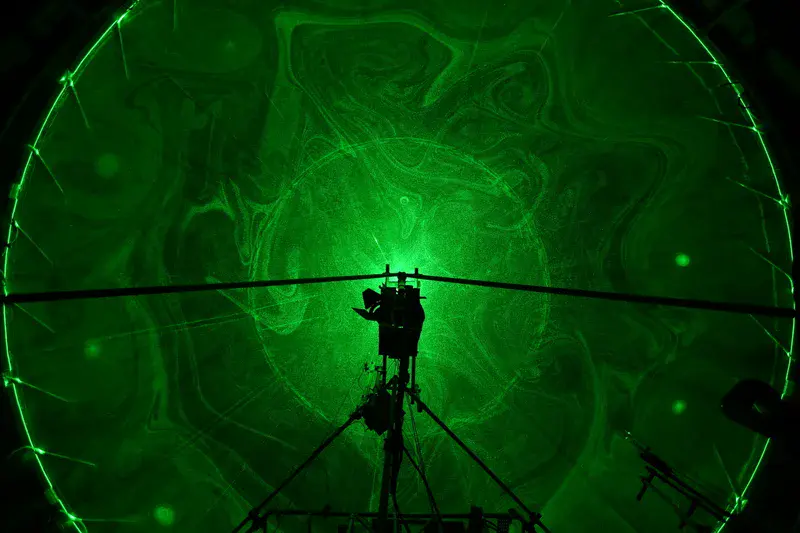
The turbulent life of oceanic dense currents
Understanding Earth’s climate dynamics is one of today’s greatest challenges. It depends on our understanding of the ocean dynamics over a large variety of interacting scales in time and space. Downslope currents induced by density differences represent one of the key submesoscale processes that lead to energy transfers to larger/smaller scales, impact the thermohaline structure and the vertical exchange of water masses in the ocean, and play a crucial role for the overall ocean circulation and climate.
Laboratory experiments on the rotating Coriolis platform (Grenoble, France) are performed using an axysimmetric conical slope descending toward the center of the tank and injecting salt solutions from 32 injectors equispaced on the outer edge of the tank at a given flow rate within a discrete or continuously stratified ambient fluid. Measurements are based on PIV and Fluorescent dye visualizations to capture the velocity and scalar fields, respectively, that are performed in the full basin domain.
The image shows a top view from an instantaneous PIV image, illuminated by a Yag laser horizontal slice (532nm, green light), with organized cyclones at the outer part of the tank highlighted by highly concentrated PIV particles in their core and the induced topographic Rossby waves, along with various vortical structures typical of geophysical turbulence within the central part of the tank.
Category
Location
- Europe (3893)
- Western Europe (788)
- France (179)
- Exact location (5.7144 E, 45.0947 N)
Colours
Image properties
1500 × 1000 px;
image/jpeg; 1.2 MB
Camera:
Nikon D850
Software: Paraview
Taken on 7
February
2019
Submitted on 19 February 2019
Licence
Creative Commons Attribution 3.0 Unported (CC BY 3.0)
Credit
Maria Eletta Negretti (distributed via imaggeo.egu.eu)
Share
Appreciate
Report